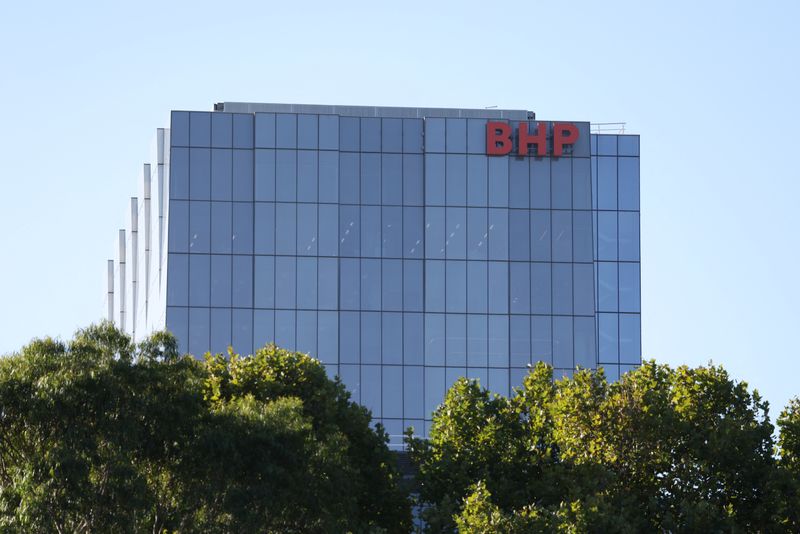(Reuters) -BHP reported on Friday annual copper production above 2 million metric tonnes for the first time but warned of lower output next year while separately flagging delays and cost blowouts of up to 29% for its key Jansen Stage 1 potash project.
The world’s largest listed miner achieved copper production of 2.02 Mt in fiscal 2025, at the upper end of its forecast range. However, it expects output to drop to between 1.8 Mt and 2.0 Mt in fiscal 2026, reflecting planned lower grades at its flagship Escondida mine in Chile.
BHP also reported record annual iron ore production of 290 Mt, at the upper end of its guidance, while its fourth-quarter output of 77.5 Mt beat a Visible Alpha consensus estimate of 75.90 Mt.
The miner said first production from its Jansen Stage 1 potash project in Canada has been pushed back to mid-2027 from the previously targeted end-2026, while capital expenditure estimates have surged to $7.0 billion-$7.4 billion from $5.7 billion – a cost increase of up to 29%.
“The estimated cost increase is driven by inflationary and real cost escalation pressures, design development and scope changes, and our current assessment of lower productivity outcomes over the construction period,” BHP said in a statement.
Strong iron ore production in the June quarter helped offset a weak March quarter that was impacted by two tropical cyclones. BHP had undergone a debottlenecking exercise at its Pilbara operations after ramping up the South Flank mine last year.
For fiscal 2026, BHP expects iron ore production between 284 Mt and 296 Mt.
The company is also assessing a potential divestment of its Western Australia Nickel assets as part of an ongoing review, citing balance sheet impacts from the nickel business.
“Any decision to divest will be subject to an assessment against other options, including continuing temporary suspension, restart or closure,” it said.
(Reporting by Roushni Nair and Roshan Thomas in Bengaluru, Melanie Burton in Sydney; Editing by Devika Syamnath)
